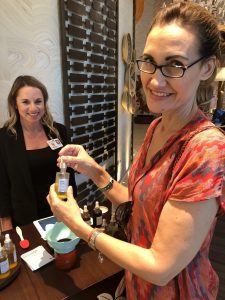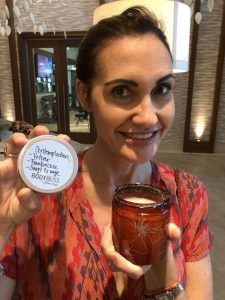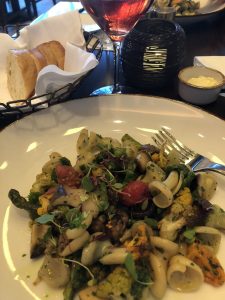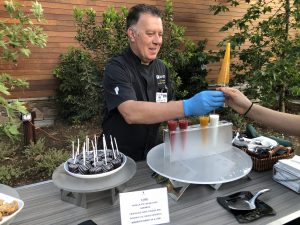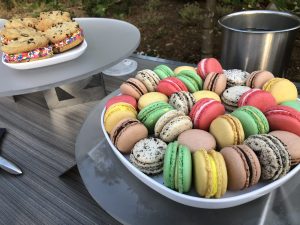“Eat, Pray, Love” has spiritual seekers everywhere following in Elizabeth Gilbert’s footsteps — literally — traveling to Italy, India and Bali on an adventure of a lifetime. And now that Julia Roberts has followed suit on the big screen, it is likely that many more will make the sojourn to these exotic locations in pursuit of something to “marvel” at. There is much to marvel at anytime you travel. Everything is new, and different. It opens your eyes, engages the senses. Travel is an amazing opportunity to learn and grow through new experiences.
And yet, as Confucius stated so plainly: “No matter where you go, there you are.” The spiritual journey is a journey within. We don’t need to climb a mountain in Tibet to achieve the kind of inner peace we so desperately crave. We don’t need to go anywhere, we don’t even need to do anything, to find ourselves in a place of balance and bliss.
So, given that we can’t all jet off to foreign countries on a whim, let’s go on our own spiritual quest, right where we are, starting with “eat.”
Tantra teaches us that we experience the world through our five senses. Taste is definitely one of those senses where we can experience much pleasure — and given the cuisine, one might even say nirvana. When eating, the sense of smell also comes into play; the aroma heightens the anticipation, and enhances the flavors. Sight is involved with food. We’ve learned from the many Food Network shows how important presentation is in a meal. When food looks good, we’re more likely to perceive it as tasting good. Touch is in the texture of the food. How does it feel in your mouth? And even sound is in food — from the sizzle on the grill to the crunch of that perfect bite, to the oohs and aahs that emerge from satisfied diners.
Great pasta dinners aren’t only in Italy. We can cook, and have fun in our very own kitchen creating and experimenting with sauces and seasonings. Or we can find a lovely little neighborhood restaurant, and allow ourselves to be served with careful attention. Eating gives us a chance to indulge all of our five senses, to be present in the moment, to savor the experience and to be aware of the feelings that it evokes from deep within. When we are in present moment awareness there is no regret, fear or guilt. There is only gratitude. And that is a beautiful place to be.
“Pray” takes us into silence, into the stillness where all the wisdom of the universe can be found. Our busy world is filled with commotion. We are inundated with errands and emails and obligations. Our lives are slaves to the clock and the calendar, scheduled out farther that we even care to plan. But when we meditate, there is no time and space. The world seems to stop; our mind begins to quiet. Gone are the commercials and the traffic and the to-do lists. Suddenly we become aware of our breath, which brings us back to ourselves. We listen, and answers come, truth reveals itself, calmness settles in.
We could be in a temple, some historically preserved monument. Or we could be right where we are, perhaps smack dab in the middle of the couch. It doesn’t matter, because it’s all the same, it’s all connected. When we get together and meditate in groups, the experience is amplified. Energy rises, and circulates, and infuses each participant. Take that time away from the busyness, shut off the phone, unplug from technology — get back to nature, get back to yourself and you’ll remember who you are.
“Love” is all about relationships. And life is all about love. Who we love, and what we love. When we are doing what we love and also helping people, then we have found our “dharma” or purpose in life. There is nothing more fulfilling. If there is anything this world needs more of, it is love. We can never get too much of it! Extend yourself beyond your comfort zone, beyond the parameters that have been self-imposed, and reach out to someone with love. It’s easy to love a baby, or a kitten. So innocent and sweet, so receptive and accepting. The challenge is for us to love something or someone that might appear to us to be unlovable. The rejected, the downtrodden, the messy, the annoying. Yet when we do open our hearts, and we allow that love to pour forth, we feel an influx of love coming right back to us.
Love the moment, every moment. Love where you are, wherever that is. Marvel at your surroundings, the miracles that extend in and around the immediate environment. Everything that is here is here for you. The ground yearns for your footsteps. You love, and you are loved completely.
When you implement these simple techniques, what starts as a holiday becomes a habit. That habit then becomes a lifestyle. It’s a matter of mindfulness. We have the opportunity to practice every day, every moment, anywhere we are.
My new e-course with Daily Om is 9 Weeks to Joyful Living. You pick the price! Do the exercises and you’ll find you are living a life filled with elegance, joy, and simplicity. Once you do that, you can’t go back.










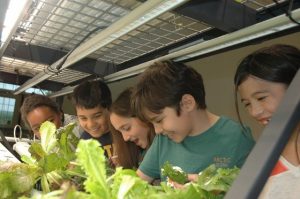 FOR IMMEDIATE RELEASE
FOR IMMEDIATE RELEASE






